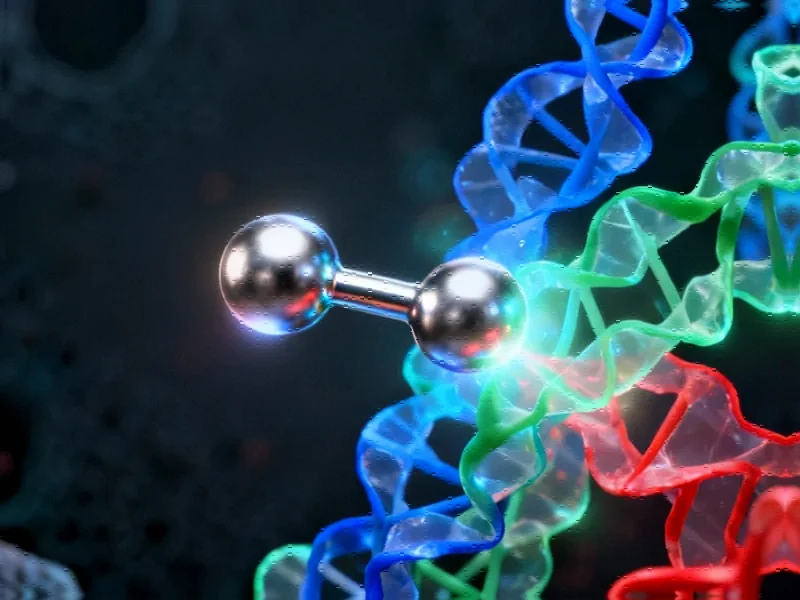The Platinum Advantage in Cancer Therapeutics
In the relentless battle against cancer, multidrug resistance (MDR) remains one of the most significant challenges in chemotherapy. Traditional approaches have focused on inhibiting ABC transporters that pump drugs out of cancer cells, but researchers have now uncovered a more elegant solution using platinum’s natural affinity for proteins. This groundbreaking approach represents a paradigm shift in how we approach drug resistance, moving from fighting cellular defense mechanisms to designing drugs that simply bypass them entirely.
The concept builds on a curious observation: platinum-based chemotherapeutics like cisplatin and oxaliplatin consistently show high intracellular retention even in cancer cells with overactive efflux pumps. This phenomenon puzzled researchers until they recognized platinum’s promiscuous covalent binding with proteins and peptides. When platinum forms large protein adducts, these complexes simply become too bulky for ABC transporters to recognize and remove, effectively making the drugs “invisible” to the cell’s primary defense system.
Engineering Smarter Drug Conjugates
Researchers developed a series of innovative platinum-drug conjugates by synthetically tethering anthracyclines like doxorubicin to platinum moieties derived from clinically established agents. The lead compound, doxaliplatin (DoxPt), represents a significant departure from conventional drug conjugates. Unlike typical platinum-containing conjugates where components are designed to separate inside cells, DoxPt features non-leaving group NH ligands that maintain the platinum-anthracycline connection, creating what essentially functions as a single molecular entity.
This structural integrity proves crucial for overcoming resistance. HPLC studies confirmed that DoxPt maintains its structure even in the presence of biological nucleophiles like cysteine and glutathione, with minimal release of the parent doxorubicin component. This stability ensures the conjugate retains its ability to evade efflux pumps while delivering dual therapeutic action. The approach demonstrates how strategic molecular design can create compounds that bypass cellular resistance mechanisms without requiring additional efflux inhibitors.
Remarkable Efficacy Against Resistant Cancers
The therapeutic potential of these platinum conjugates becomes evident in their performance across multiple drug-resistant cancer models. In A2780 ovarian cancer cells and their P-gp-overexpressing A2780ADR counterparts, DoxPt maintained potent cytotoxicity where doxorubicin failed completely. Even more impressively, in MES-SA uterine sarcoma cells and their drug-resistant MES-SA/Dx5 derivatives, DoxPt completely abrogated what would otherwise be a 60-fold resistance to doxorubicin.
What makes these results particularly compelling is that physical mixtures of doxorubicin and oxaliplatin showed no such ability to overcome resistance, highlighting the necessity of covalent platinum incorporation. The conjugates proved effective against multiple ABC transporters, including P-gp and MRP1, demonstrating broad-spectrum activity against MDR. These findings suggest we’re witnessing the emergence of a new class of therapeutic agents capable of evading multiple drug clearance pathways simultaneously.
Mechanistic Insights and Cellular Behavior
Further investigation revealed fascinating details about how these conjugates behave inside cells. Live cell imaging showed dramatically different distribution patterns between doxorubicin and DoxPt. While doxorubicin accumulated primarily in nuclei of sensitive cells but was excluded from resistant cells, DoxPt displayed similar cytoplasmic localization in both sensitive and resistant lines, unaffected by P-gp inhibitors like verapamil.
Atomic absorption spectroscopy measurements confirmed that platinum retention patterns for DoxPt mirrored those of oxaliplatin, with similar accumulation regardless of efflux activity levels. Subcellular fractionation revealed that over 60% of platinum accumulated in the cytoplasm, with only about 10% reaching the nucleus. Most significantly, the majority of cellular platinum was found bound to proteins, with DoxPt showing even greater protein preference than oxaliplatin alone.
These observations align with recent industry developments in targeted cancer therapies that focus on alternative mechanisms beyond traditional DNA damage.
Broader Implications for Drug Design
The implications of this research extend far beyond the specific compounds tested. The study demonstrates that leaving group ligands influence absolute potency but aren’t essential for overcoming efflux, while non-leaving group ligands are crucial for evading transporter recognition. Control experiments with easily dissociable conjugates still showed partial ability to overcome efflux, suggesting even transient platinum association provides some protection against cellular clearance.
This approach represents what could become a general strategy for enhancing conventional chemotherapeutics. As we see with other related innovations in medical technology, sometimes the most elegant solutions come from understanding and leveraging natural molecular behaviors rather than fighting against them.
Future Directions and Clinical Potential
The researchers examined DoxPt’s mechanism of cytotoxicity using the NCI60 screening panel, finding strong correlations with both classical N-alkylating agents and Top2 inhibitors. This dual activity profile, combined with the ability to circumvent efflux, positions platinum-drug conjugates as potentially transformative agents in oncology.
What makes this approach particularly promising is that it doesn’t require co-administration of efflux inhibitors, which often come with their own toxicity profiles. The conjugates effectively use the cell’s own biochemistry to their advantage, creating bulky protein adducts that naturally evade recognition by efflux pumps.
As the field of cancer therapeutics continues to evolve, we’re seeing parallel market trends in computational approaches that could further accelerate drug development. The success of these platinum conjugates also highlights the importance of robust infrastructure, much like the cloud computing platforms that support modern research efforts.
Looking forward, this research opens numerous possibilities for designing next-generation cancer therapeutics. The platinum pharmacophore could potentially be conjugated to various other chemotherapeutic agents facing efflux-mediated resistance. As with many recent technology advances, the most impactful innovations often come from cross-disciplinary approaches that combine insights from chemistry, biology, and clinical medicine.
The demonstrated ability to overcome multiple resistance mechanisms simultaneously suggests these conjugates could be particularly valuable in treating advanced cancers where MDR often develops. As research progresses, we may see similar strategies applied to other challenging areas of oncology, potentially revolutionizing how we approach treatment-resistant disease. The ongoing advancements in supporting technologies will likely play a crucial role in translating these laboratory findings into clinical applications.
This article aggregates information from publicly available sources. All trademarks and copyrights belong to their respective owners.
Note: Featured image is for illustrative purposes only and does not represent any specific product, service, or entity mentioned in this article.



